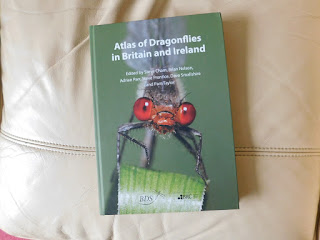I've said before that, when it comes to field guides, I like to have more than one guide, ideally one with photos and one with drawings. Very often different guides complement each other, so having multiple guides can be very useful. Also, I like to see the 'bigger picture', seeing what species occur just outside the area covered by the main guides.
When it comes to butterflies, I've got several guides now, including one which covers the whole of Europe (see here, here, and here if you want to see details of these). But when it comes to damselflies and dragonflies, I just have one guide. Clearly, balance needed to be restored!
For seeing that 'bigger picture', I got the Field Guide to the Dragonflies of Britain and Europe, which has photos as well as drawings by Richard Lewington.
The laminated card I got for butterflies has proved to be a very useful aide memoire, and easy to put in a backpack if you can't take 'full' field guides, for whatever reason. So I got something similar for dragonflies. This RSPB ID Spotlight card includes the 42 more common species. Illustrations are, yet again, by Richard Lewington.
The final dragonfly book I got isn't really a field guide. The Atlas of Dragonflies in Britain and Ireland contains a lot of information on their ecology and conservation status and, as such, is a valuable source of additional information; not a book you'd take with you into the field, though.
In terms of field guides, I'm as prepared as I can be now for identifying butterflies, damselflies and dragonflies in the field this coming season; bring on spring!




















































